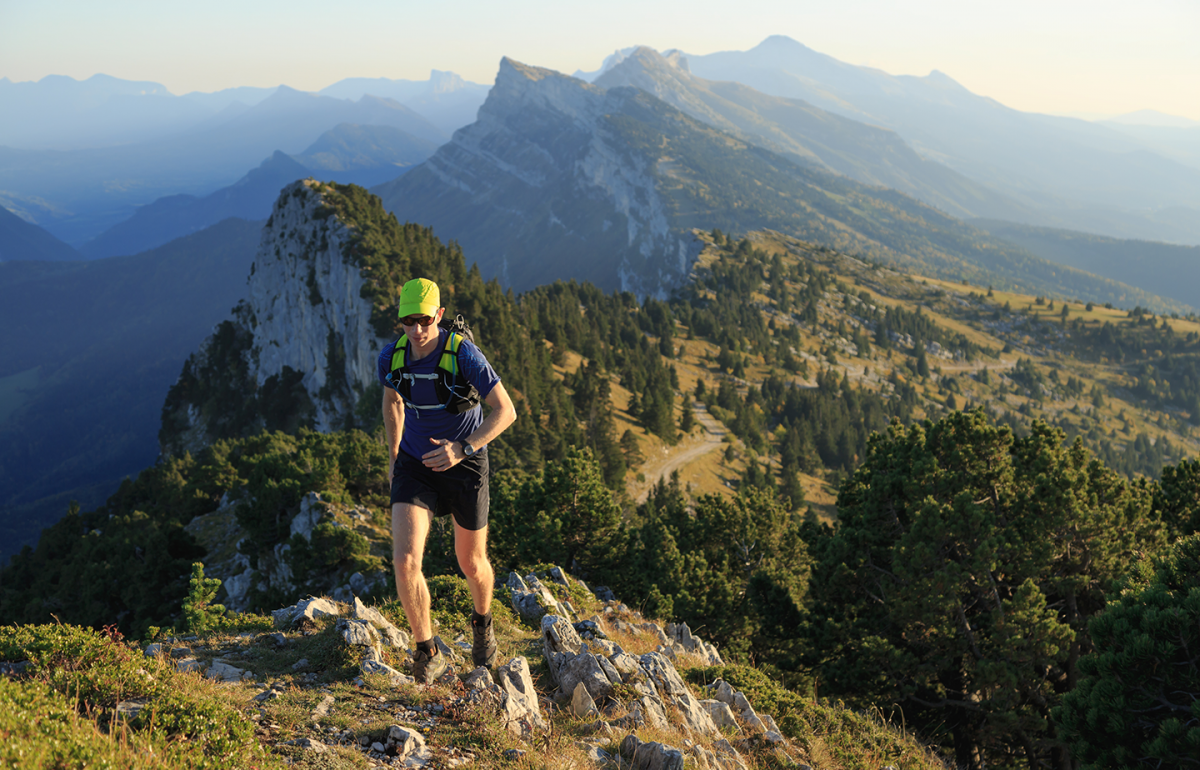Running on and off beaten paths or across wild terrain – that’s trail running. Running on trails is especially close to nature. Rough terrain and obstacles train not only physical endurance but also the runner’s coordination and concentration skills. Since the whole body has to be stabilized, more muscle groups are used than when running on the road.
The running surface changes during trail running from soft paths, natural and rooted paths over meadows and rocky surfaces. Sometimes you run through creeks or over hiking and mountain trails, other times you follow well-trodden paths across country or through the forest. It is not a question of kilometers and times. The focus is on experience, fun and adventure. So it’s not surprising that trail running makes you forget your everyday life much faster than normal running training.
Requirements
Trail running demands the whole body and promotes strength endurance and coordination. Sure-footedness and running dynamics are thus promoted. As with other endurance sports, a slow approach to a new load is extremely important. Trail running requires a certain basic condition and strength. With every step, the feet have to “adjust” to the terrain, react to unevenness and stabilize the body. The musculature of the feet, legs and upper body is thus put under great strain.
If you have been training for a while, there is nothing to stop you from starting trail running. You choose a running course from which you can make a detour into the open terrain. This way you can get a taste of “trail-running air” and gently accustom your musculoskeletal system to the new strain. Nowhere is this easier than in Switzerland, where there are over 60,000 km of marked hiking and mountain trails.
Strength training for the whole body is important. It protects against overloading or injuries. Strong muscles can absorb missteps better. The feet should be accustomed to the new strain by regular barefoot running, exercises on the balancing board or foot exercises.
Trail-Running Training Tips
In trail running, the running speed is lower than in running training on a track or on asphalt, if only because of the increased load. Depending on the nature of the track, it is essential to adjust the pace to avoid any risk of missteps. Concentration and coordination are much more important on uneven terrain. You soon notice that the running speed suddenly becomes secondary and the experience in nature much more important.
Note that in cool temperatures a lot of fluid is lost through breathing. Depending on the length of the trail running, you may have to make up for the fluid deficit while running. The need for drink replenishment is often underestimated. For running units of one hour, however, it is perfectly sufficient to make up for the fluid and energy deficit after training.
Equipment
The equipment necessary for trail running depends very much on the difficulty of the terrain, the weather and the duration of the run. Shoes for easy terrain (urban trail running) require only slightly more grip and stability than street running shoes. However, more difficult terrain makes greater demands. In addition to a good profile and good stability, a low center of gravity, the lowest possible weight (100 g on each foot increases oxygen consumption by about one percent), robustness and weather protection are often considered important.
Have fun in nature!
You might also be interested in this:
Complementary training for jogging can help us run more efficiently and faster and regenerate ourselves better.



